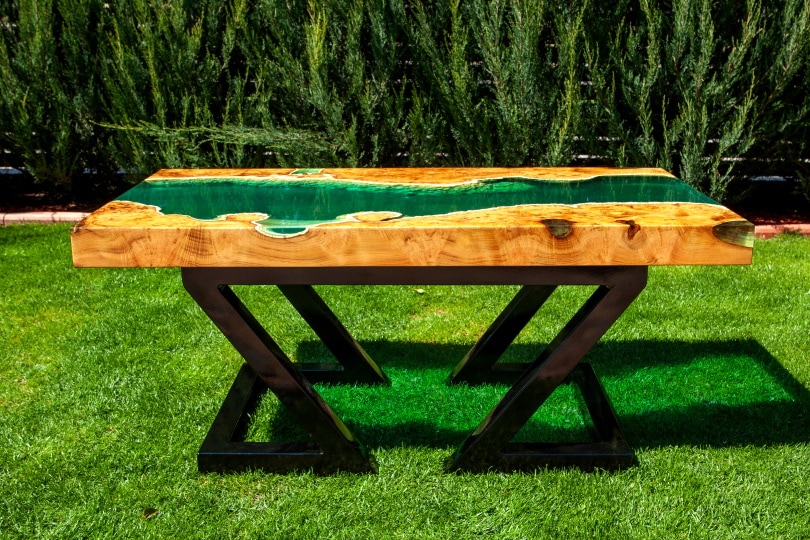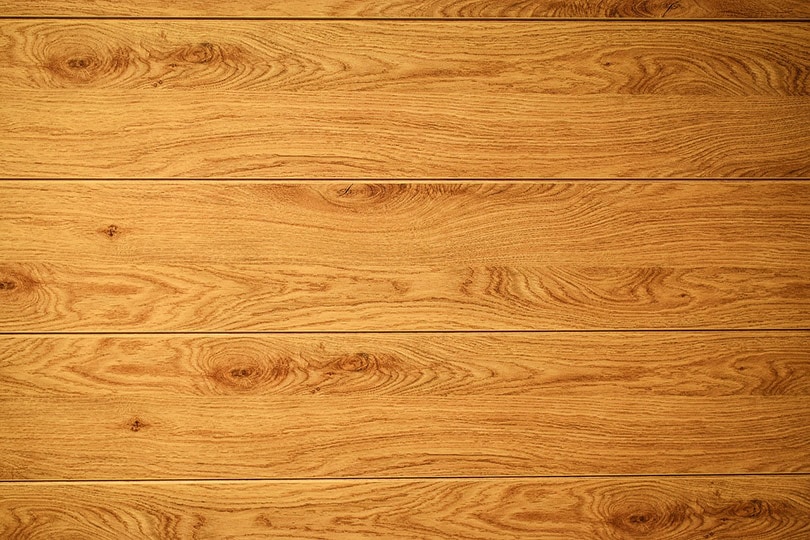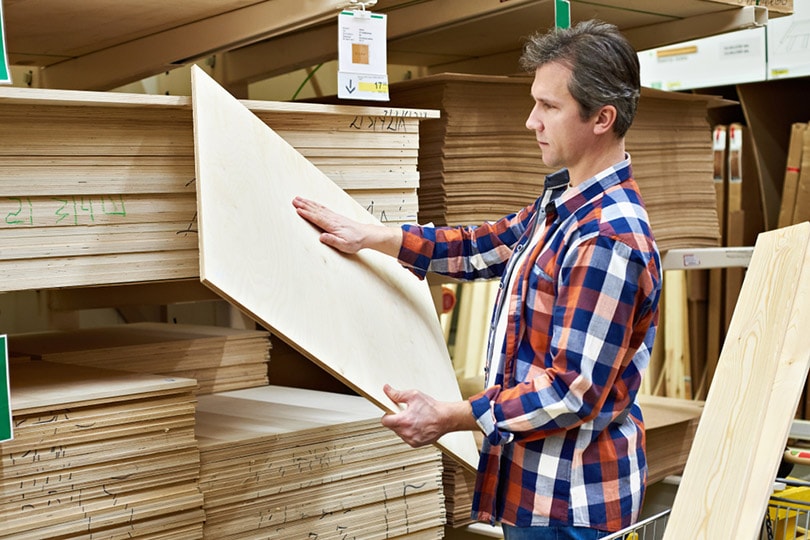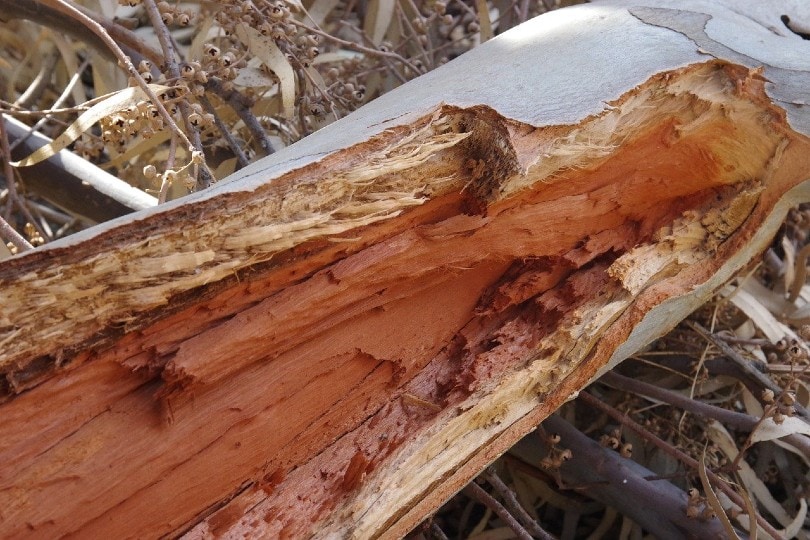What Is the Best Wood for Epoxy Tables?
-
Pete Ortiz
- Last updated:

There are over 60,000 types of wood on this planet, and that makes it difficult to know which wood type you should select for your epoxy table. Unfortunately, there is no one size fits all answer to what kind of wood you should select.
Although elm, oak, and walnut are popular wood varieties for this purpose, there are other factors you need to consider when making your final wood selection. Moisture content, for example, can make a huge difference in the final results.
Keep reading to learn what to look for when selecting the best wood for epoxy tables.
 What Timber Is Best for Epoxy Tables?
What Timber Is Best for Epoxy Tables?
When selecting timber for epoxy tables, you want to select a flat piece of hardwood. Oak, walnut, redwood, elm, and yew are popular timber. These wood types are very hard, but they can be sanded down to show an attractive pattern for the table.

Consider More Than Timber Type
Unfortunately, selecting the best timber is only half of the battle. You also must consider the moisture level of the wood. For the resin to properly bond and create a sturdy table, the wood needs to have a moisture level below 20%.
What this means is that the moisture level is more important than the specific wood type. For instance, although black walnut is a favorite for resin tables because of its durability and flat design, it might not be a good choice if it has not been properly dried.
With this in mind, you want to look for timber that is hard, flat, and properly dried. Just considering the timber type is not enough to select the best wood for your epoxy table.
How To Select The Best Wood For Epoxy Tables
Whenever you are selecting the best wood for epoxy tables, there are three factors you need to consider: strength, flatness, and moisture. Selecting a wood that excels in all three categories will result in the best results.

Strength
If you are making an epoxy table, the last thing you want is to select a wood that will break easily or not stand up to the test of time. Instead, select a durable and hard wood that is frequently used for tables. Oak, walnut, and redwoods are known for being durable and strong. Elm, yew, and cherry or other hard woods to consider.
Flatness
Whenever you are making a table, you want the table to be sanded down for flatness. Although all wood can be sanded down, certain woods are easier to make flat than others. Oak, walnut, and elm are frequently used for tables precisely for this reason. These woods can frequently be found as flat living edge pieces.
Moisture
Lastly, you have to consider the moisture levels within the wood. Even if you select a strong and flat variety, it might not be as sturdy or stable as you want it to be if it is too moist. Only select wood that has been properly dried out so that the moisture level is below 20%. Properly dried wood has been dried for a year or more.
How To Measure Wood Moisture
Selecting wood based on strength and flatness is relatively easy. After all, you mainly only need to look at the wood type, not individual pieces of timber. Selecting timber based on moisture is a bit more difficult because you have to measure the exact timber in front of you.
The best way to measure wood moisture is to use a moisture meter. There are two different types of meters you can use: pin-type and pinless. No matter which meter you use, follow the instructions to learn exactly how much moisture is in the wood’s content. Remember, you want under 20%.
If you do not have a moisture meter, there is another way you can test the moisture content. Oven dry testing has been used for many years, but it is time-consuming. Overall, we recommend purchasing a moisture meter because it takes less time, is more reliable, and does not damage the wood.

What Kind of Wood Is Used for Live Edge Tables?
Live edge tables and epoxy tables are very similar. They use a slap of wood to create a rustic and attractive table surface. Epoxy tables often start out as live edge tables, but epoxy is used to fill in the gaps. Because epoxy and live edge tables are so similar, they are typically made from the same wood.
For both live edge and epoxy tables, you want to select a wood that is stable and hard. Live edge tables are frequently made from oak, walnut, redwood, and cherry. These woods are known for being hard and having the ability to withstand wear and tear from regular use.
As you can see, live edge tables use the same types of materials as epoxy tables. This is simply because these sorts of wood are better known for their durability, strength, and reliability, which are needed from all tables.
Conclusion
If you are looking for the best wood for epoxy tables, we recommend starting with oak, walnut, or elm. From there, look for slabs of timber that are flat and have a moisture content below 20%. If you fail to consider the flatness and moisture, your table might not come out stable, regardless of what kind of wood you select.
We recommend purchasing a moisture meter so that you can test the moisture of the timber before using it on your epoxy table. Although a moisture meter will cost you some extra money, it will make the process and final results much more reliable.
Featured Image Credit: serdiuk yehor, Shutterstock
Contents

 What Timber Is Best for Epoxy Tables?
What Timber Is Best for Epoxy Tables?
